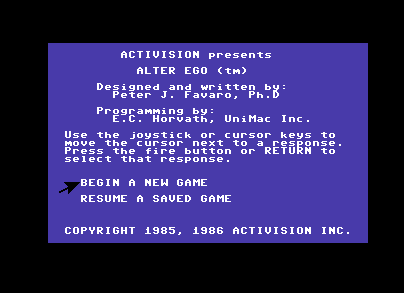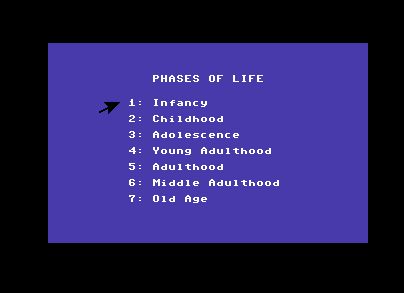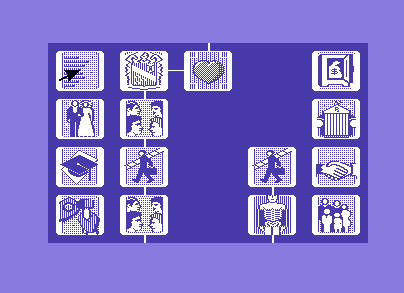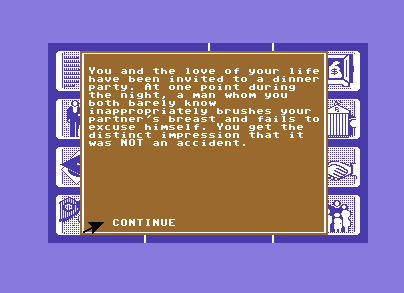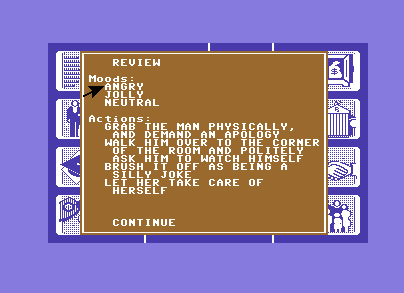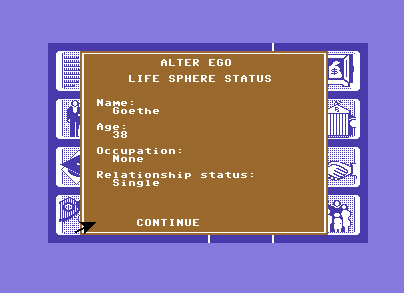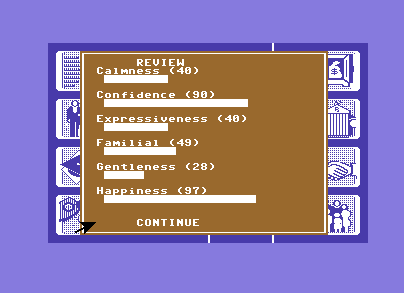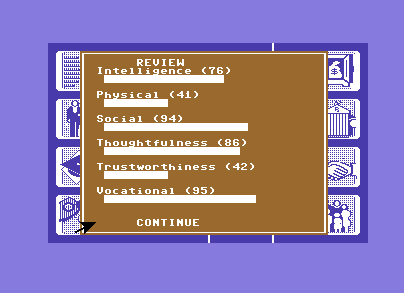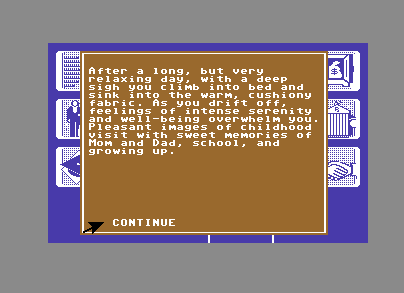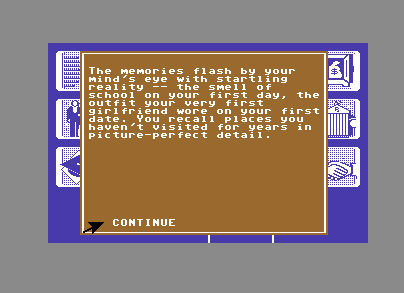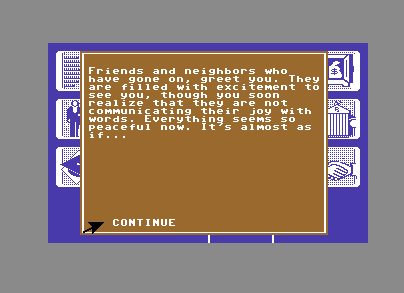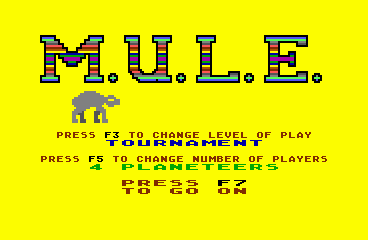
Some background: Wikipedia | MobyGames
[table caption=”Carpe Ludum Codex Quickie (…details at the end of the post…)” border=”1″ th=”1″]
3Y+,2H+,-25H,|,Presentation,Story,Immersion,Social,FOAK,Metacritic,Longevity
X,X,X,|,O,O,X,O,X,X,X
[/table]
Game Review
Alter Ego is a very unique game – it is a “life simulation role-playing game” which lets you have as many different life experiences – from before-birth to death – as you like. It is a psychological game, and the center of the game is your own psyche.
Alter Ego is not really a “game” in the classic sense. It is more like an episodic, interactive “storybook of life”, allowing you to experience hundreds of life situations, make decisions, and see what consequences they have. It is also one of the few games where your game character’s goal is to die of old age. Saying this, you see the contradiction of perceiving Alter Ego as a “game”. Of course, dying is not the goal. As in real life, in the “game” of Alter Ego, the journey itself is the goal.
The game has been envisioned and created by Peter J. Favaro, a psychologist. The game was published in 1986. From the game manual, and from an interview Peter gave in 2007, it is deductable how much fun he must’ve had in creating the game. The “life experiences” are from his experience as psychologist on the one hand, based on hundreds of interviews with real people. On the other hand, many episodes came just from Peter’s mind, as he said in his 2007 interview. Peter’s sense of humour is absolutely fabulous – there are so many funny situations hidden in the game, that the game will almost always lift up your spirits when you play it.
Another noteworthy aspect is that two versions of the game have been published – a male version (the original release) and a female version (released some time after). Many life episodes are the same in both versions, but there are many gender-specific episodes as well. Of course, no man is prevented from playing the female version, or the other way around.
Alter Ego is made up of seven chapters – phases of life. The game can be started in any life phase (for example, directly in “Adulthood”), and then progresses through life, until death. Death hides in many places throughout the game – violent crimes, accidents and disease can hit you, especially if you have a tendency to behave recklessly.
During your alter ego’s life, you are presented with choices of life experiences in many different categories – work, interpersonal, love, health, family, and more, arranged in a tree in the middle part of the screen. However, there is no need to follow a particular order – life experiences can be chosen completely freely. As you progress through your alternate life, on the left and right side of the screen, several other life experience categories reveal themselves. Marriage, College, Finance, Work, Relations, Intellect, Family…
Each life experience is a small story, usually followed by a set of actions/choices you can take in the situation, like in the following example.
Each choice you make does have consequences, reflected in your so-called “Life Sphere”. Depending on how you behave in the various situations (and depending on which life experiences you choose in the first place!), your “life statistics” evolve very differently. Within the game’s universe, this actually does make a difference throughout your alter ego’s life. Depending on your alter ego’s statistics, you may or may not be eligible for certain jobs in the future; you may or may not have chances with certain educational institutions; you may or may not have chances to build a steady relationship or even marry… Just like in real life.
Summary
I usually dig out Alter Ego once in a year on a rainy weekend (like this one) or in periods with tough life decisions looming, requiring me to think more about life than on the usual Saturday-evening movie night. Playing Alter Ego is a nice way to remind myself that life’s about making decisions, not about pondering them for too long. Alter Ego is also some kind of real-life escapism. Instead of escaping into fantasy novels, with Alter Ego you can simply enjoy the fun of experiences and decision-making in different life episodes. The game also has great replay value – it is fun to try some episodes again and make different decisions next time around. Also, let me again mention Peter J. Favaro’s excellent humour. Although decision-making can be tough – at least you can laugh while making them!
Summarised, I can whole-heartedly recommend this “game” to any gamer who is not running away from the sound of the word “psychology”.
[table caption=”Carpe Ludum Codex Details” border=”1″ th=”0″]
3Y+,”X – 1986, ’nuff, said”
2H+,”X – The game state can be saved at any point, so it is easy to play it in small portions.”
-25H,”X – Each life phase takes about 2 hours to play, so you can usually complete your alter ego’s life in about 12 hours (‘to complete’ means ‘to die’). That is quite astounding, considering that a normal life usually takes around 80 years to complete.”
Presentation,”O – Mostly text, some monochrome icons, no music… The game designers clearly had the inner beauty of humanity in mind when they programmed the game…”
Story,”O – On the one hand, Alter Ego tells the story of a lifetime… But on a closer look, it is not a consistent story, but only unrelated episodes.”
Immersion,”X – Yes, you can drown in the game, reflecting your own self for hours pondering how you would react in an episode”
Social,”O – Being a one-player game, there is nothing much social about it.”
FOAK,”X – Alter Ego was the first game to put your own psyche in the center of a game.”
Metacritic,”X – MobyRank scores of 100 (CVG Computer and Videogames), 98 (Zzap!), 90 (Happy Computer) from three respected game magazines of the time are recorded.”
Longevity,”X – In 2014, the Alter Ego brand is still alive, as a web-based game, and apps for Android and iPhone. Check out at www.playalterego.com.”
[/table]

